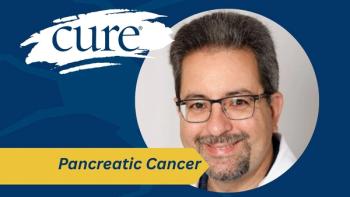
‘Freezing’ Nerves May Effectively Treat Post-Mastectomy Pain in Breast Cancer Survivors
A procedure that targets and freezes nerves that were damaged during a mastectomy may be a safe and effective method of relieving pain in breast cancer survivors.
A newer interventional radiology strategy that targets the nerves damaged after a mastectomy may provide lasting relief for breast cancer survivors experiencing chronic pain, according to an expert.
In fact, approximately 20% to 30% of women with breast cancer develop symptoms of post-mastectomy pain syndrome, according to a report by the American Cancer Society. Much of that pain, the information continued, is believed to be associated with nerve damage as a result of the surgery.
“During mastectomies and axillary dissections, which are operations that harvest the lymph nodes in the armpits, can result in nerves being stretched or damaged or nicked,” Dr. J. David Prologo, an associate professor in the Department of Radiology and Imaging Services and director of Interventional Radiology Services at Emory Johns Creek hospital in Johns Creek, Georgia, said in an interview with CURE®. “And (there could be) chronic irritation and pain that nerve forever.”
Getting to the Root of the ‘Iron Bra’
This type of nerve pain is part of what Prologo referred to as “iron-bra syndrome,” which is the discomfort that can come from the mastectomy-related strain and damage that happens to nerves that run under the ribs. Iron-bra syndrome often appears as pressure or constant pain that affects their activities of daily living.
Most commonly, this is treated with drugs such as opioids, Prologo said, though a non-surgical interventional radiology procedure (where a CAT scan, MRI or ultrasound is used to guide needles into the body) may offer a drug-free way to treat this pain.
However, one of the interventional radiology strategies that Prologo and his colleagues recently studied was targeting the intercostobrachial nerve, which runs under the arm and through the breast and plays a major role in persistent post-mastectomy pain.
“What we do is track back the pain to the nerve that is transmitting the pain,” Prologo said. “Then we use image guidance to guide a very small needle to that exact nerve — and this is where the magic happens.”
Once the nerve is found, clinicians can apply a specific amount of cold — a process known as cryoablation. This induces degeneration and subsequent regeneration of the nerve.
“So, when that new nerve grows back, you essentially have a brand-new nerve that was not present during the surgery,” Prologo said.
In a small study of women with post-mastectomy pain who underwent cryoablation, there was an average decrease in pain score (which was ranked on a 10-point scale) of three points after six months. Prologo said that any intervention that decreased pain scores by more than two points would be considered significant.
The process, however, elicits some minor side effects, such as bleeding, infection or temporary numbness, Prologo mentioned.
Finding an Interventional Radiologist
Patients who are considering an interventional radiology intervention such as cryoablation should talk to their health care providers to see if their cancer center offers the service.
Or, Prologo said that patients can visit the Society of Interventional Radiology’s website, where they can search by zip code to find a specialist in their area.
“(Mastectomy-related pain) is one specific example of how interventional radiologists can target a nerve that’s responsible for pain related to cancer,” Prologo said. “It’s just the top of the iceberg … the ability to inject or freeze (pain generators) has created an explosion of potential applications.”
For more news on cancer updates, research and education, don’t forget to





